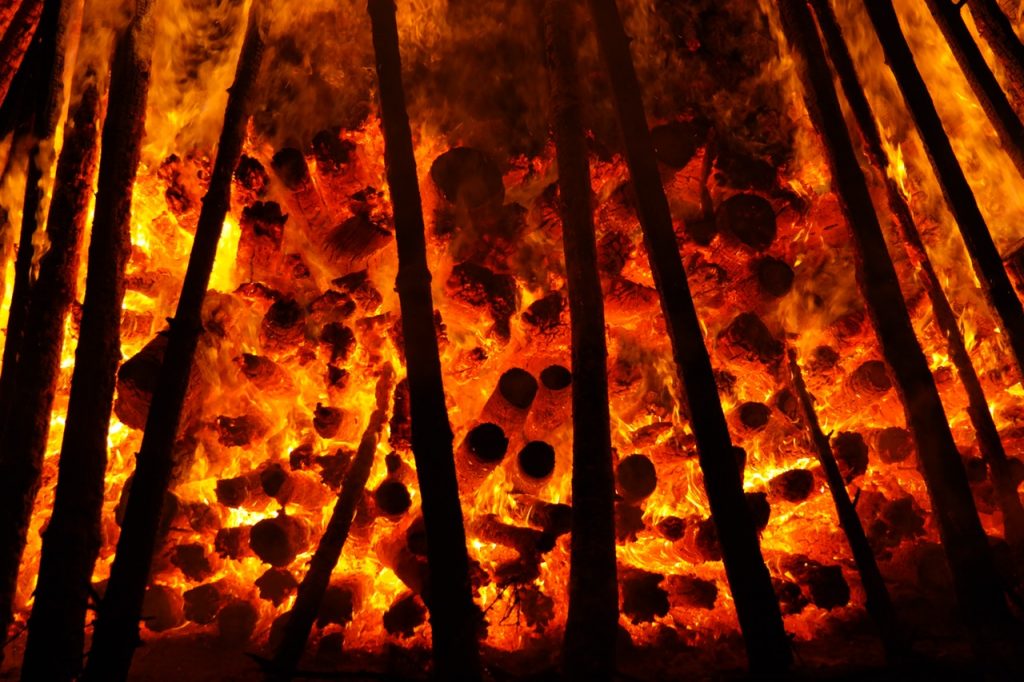As Australia battles this unprecedented bushfire season and mourns the loss of life, land, flora and fauna, questions arise about how the nation will heal from this devastating natural disaster. So far, the 2019-2020 bushfire crisis has killed a total of 33 people, one billion animals and destroyed 10.3 million hectares. Some have lost their businesses, homes and loved ones. This, in turn, has impacted upon the psyche and mental health of many individuals and communities. Tributes have flooded in to honour those lost fighting or fleeing the fires, as well as for the many iconic native animals that have perished.
How have bushfires affected our health?
Apart from the obvious physical impacts and economic impacts, the Australian bushfire crisis has affected our nation’s health. This includes both mental and physical health. The smoke from the fires caused severe air pollution and saw some cities, such as Canberra, have the worst air quality in the world at one point. Poor air quality poses serious health risks and can even be fatal to those who have a pre-existing respiratory illness, such as severe asthma attacks. The elderly and young children are also at risk of developing breathing problems and diseases from this air pollution.
Furthermore, fires produce very fine particle pollution, which is damaging even after short times of exposure. This saw medical facemasks and dust masks sold out in many retail stores across Australia. Some areas experienced ‘ash rain’ as a result of particles travelling from the fires. Smoke can reach great distances, and affected the air of neighbouring New Zealand, across the Pacific, and even as far as South America.
The fires have also impacted on mental health, particularly for those that have lost loved ones, pets, businesses and homes. Many individuals experienced trauma after the frightening experience of having to be evacuated and the fear in the unknown as to whether they would lose their house or livelihood. People have lost livestock and pets, have been concerned for unaccounted loved ones and have in some cases, lost everything they possessed. Some had to shelter on beaches and boats while being exposed to thick smoke, and whole communities were destroyed. All of this can be very overwhelming for the people affected, and often this stress and burden can create a sense of isolation. Fundraisers, as well as art tributes towards the victims of the bushfire crisis, create a sense of unity and acknowledge the struggles of the people affected.
Other mental health impacts revolve around anxiety and fear as to what is going to happen in the future. The scale of this season’s fires is unprecedented and has been linked to the effects of climate change. This has caused great concern within the Australian population and overseas.
What is art therapy?
One of the ways Australians are providing comfort to those who need it the most is through the medium of art. Art therapy refers to the relationship between psychology and the artistic process. It can promote mindfulness and self-awareness, as well as healing. It can involve the subconscious mind and reveal emotions or feelings that an individual did not previously understand or recognise. Art can also be a means of reducing stress and anxiety by having a creative outlet. Art therapists often focus on the journey and processes of the artwork over the final product. It can reflect an individual’s life, experiences or moods and create meaning behind particular events or circumstances.
How have art tributes affected the Australian population?
Art has time and time again been found to impact upon the mental health and mindset of creators positively. Whilst art therapy can positively affect the artist, on a broader scale, art can have benefits for its audiences. Many quantitative and qualitative studies have been conducted over the past several decades to uncover how art really affects us. Art can collectively bring us all together and provide a sense of support and sympathy to those who need it. It can also offer hope and comfort towards a nation that has been so distraught and shocked to endure such a widespread disaster.
Artwork highlighting climate change
Attitudes toward climate change and global warming have changed significantly following the Australian bushfire crisis. This not only includes within our borders but on a global scale as the world watched the disaster unfold. People are frequently protesting and trying to spread awareness of global warming after the correlation between the fires, and global temperature rise has been evident. Some have chosen to conduct their protests or raise awareness through art. Some of this art has included political drawings involving Prime Minister, Scott Morrison, and his response to the crisis. Other artworks have been more indirect, highlighting the biodiversity and ecological damages that have occurred through paintings of wildlife. Many have particularly highlighted koalas as the species is becoming endangered, with a third of the population of koalas in New South Wales being wiped out in this season’s fires alone. The $50 million in funds given by the Australian government towards wildlife recovery indicates the sheer scale of the destruction of fauna and flora.
Looking toward the future
We can all work towards limiting our consumption and making more environmentally friendly choices. Consumers have the means to initiate and force change within corporations by the buyer power they possess. Protest, whether it is through media, blogs, demonstrations or artworks can all work together to lead change. If everyone made small changes in their daily lives, it would have a significant impact. While the people and communities affected by the 2019-2020 Australian bushfire crisis have a long road ahead to recovery, the nation and the world have come together to support and help the victims. We can all provide continued support by using our hard-earned money supporting tourism in the affected areas and donating to fundraisers for wildlife recovery funds. We must continue to try and reduce our carbon footprint and environmental impact to prevent further disasters like this.
